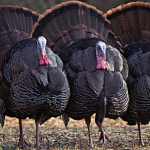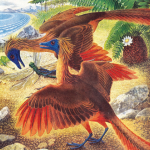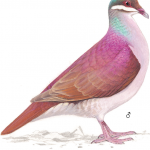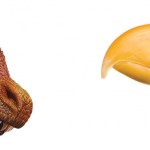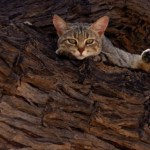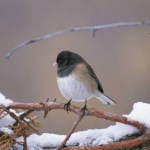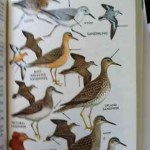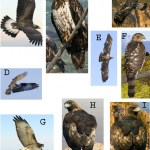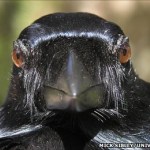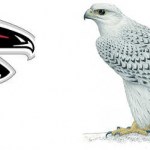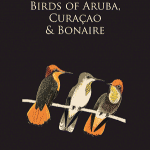Aves (birds)
Are you done with your Thanksgiving leftovers yet? You might think so, but not quite. We have one more helping of Turkey for you.
This is "Another Helping of Turkey," the second of two installments of Eat This Podcast with Jeremy Cherfas:
The domestication of the turkey probably first took place around 2000 years ago in south central Mexico, possibly for their feathers and ritual value rather than their meat. Their rise to the top of the American festive table came much later, not with the Pilgrims but with Charles Wampler, whose efforts to promote turkey raising started Rockingham County,…
"As Thanksgiving ebbs into memory and Christmas looms on the horizon, Eat This Podcast concerns itself with the turkey. For a nomenclature nerd, the turkey is a wonderful bird. Why would a bird from America be named after a country on the edge of Asia? The Latin name offers a clue; the American turkey is Meleagris gallopavo, while the African guineafowl is Numida meleagris. But why did the first settlers adopt a name they were already familiar with, rather than adopt a local indigenous name such as nalaaohki pileewa for the native fowl. Simple answer: nobody knows..."
Listen to the podcast (…
An interview with an expert on Turkey (me, apparently) about turkeys. What do I mean by "turkey"? The bird, the country, the personality trait? Well, that is the point, isn't it!
Click here to get the skinny on turkey.
There are over 10,000 species of bird on the Earth today. There is one blog called "10,000 Birds" for which I write a monthly article, in case you did not know. But this post is about Ten Thousand Birds: Ornithology Since Darwin, a book by Tim Birkhead, Jo Wimpenny and Bob Monegomerie.
Birds and various studies of birds are central to evolutionary theory and the development of all of the surrounding biology and science. Here's a short list of key roles birds have played in evolutionary biology:
Darwin's study of pigeon breeding was central to On the Origin of Species and later works.
The…
Rare Birds of North America is the only extensive treatment I've see of the so called "vagrant birds" in the US and Canada. Most, or at least many, traditional bird books have a section in the back for rare birds, occasionals or accidentals, which one might see now and then. But when you think about it, how can five or even a dozen species in a bird book really do justice to the problem of spotting birds that are normally not supposed to be spotted?
I'm reminded of one South African bird guide that has a half dozen penguin species listed in it. There is only one species of penguin in South…
There is a new book out on Penguins: Penguins: The Ultimate Guide written and edited by Tui De Roy, Mark Jones, and Julie Cornthwaite.
It is a beautiful coffee table style book full of information. All of the world's species are covered (amazingly there are only 18 of them) and there are more than 400 excellent photos. The book covers penguin science (science about them, not by them). There is also quite a bit about their conservation.
The layout of the book is interesting. The last section of the book, by Julie Cornthwaite includes portraits of each species, and a compendium of…
Flying Dinosaurs: How Fearsome Reptiles Became Birds by science writer John Pickrell is coming out in December. As you know I've written a lot about the bird-dinosaur thing (most recently, this: "Honey I Shrunk the Dinosaurs") so of course this sounded very interesting to me. In a way, Pickrell's book is a missing link, in that he writes a lot about the history of paleontology associated with the discovery, undiscovery, and rediscovery of the early bird record and the dinosaur link.
Birds have rewritten dinosaurs. Not all dinosaurs are directly related to birds, but a large number of them…
The ranger stood on the dirt road, facing south, and the rest of us, scattered about the parked safari truck, facing north and paying close attention to what she was saying. The sun was slipping quickly below the red sand dunes to our west, and the day’s warm breeze was rapidly changing to a chill wind. She talked about what we might see after we remounted the safari truck, which we had just driven out of the campground at the southern end of Kgalgadi Transfrontier Park, where we were staying in the South African camp, just across from the Botswana camp. This would be a night drive, cold,…
How do birds survive the cold weather, especially during really cold winters like the one we are having now in much of the United States?
One part of this answer has to be, sadly perhaps, that the sometimes don't. But I'll get to that later.
You need to know two things as context. First, there are a lot of different kinds of birds, and the adaptations I'll mention below are not found in all of them, and probably all of these adaptations are not found in very many species. Second, many birds are actually at great risk during cold periods because birds generally live on the edge when it…
The vast majority of the 10,000+ living species of birds are passerines, and the vast majority of those have a similar system of breeding: Mom and dad bird make a nest and share parental responsibilities roughly equally, if not identically. There are variations on that theme, of course. Even the non-passerines often follow this pattern. So, when we find a pattern that is different it is reasonable to try to explain this in adaptive terms; what features of this variant pattern provide enhanced fitness, and what ecological or social factors underly it?
There are two patterns that are fairly…
First, we had giant catfish eating pigeons (remember this?). Now, we have scientifically confirmed reports of tiger fish eating swallows on the wing. The pigeons were just standing around on the beach, but these swallows are fast moving birds in flight being snatched out of the air as they forage over the lake's surface. Please visit my latest post on 10,000 Birds, where I write a monthly thing: Swallows, Swallowed.
_______________
Photo Credit: brian.gratwicke via Compfight cc
There are something over 10,000 species of birds (thus the name of the famous blog). Of these, just under 600 are in very very serious trouble, some to the extent that we are not sure if they exist, others are so rare that we know they exist but there are no good photographs of them, others are merely very likely to go extinct. There are patterns to this rarity, having to do with what threatens birds on one hand and what makes certain birds vulnerable on the other, but the range of birds that are threatened, in terms of size, shape, kind of bird, habitat, etc. represents birds pretty…
A couple of years back, the The Crossley ID Guide for Eastern Birds came out and it caused a huge splash in the birdwatching world. For some time now it has become apparent that bird watching, especially the identification part of it, was changing in its approach. We describe it this way, though I think the reality is more complex: In the old days we used logical links to known reliable field marks to turn carefully made field observations into species identifications of varying degrees of certainty. Now, a new approach has been developed where we look at the whole bird and get an…
You’ve heard of the The Crossley ID Guide: Eastern Birds (The Crossley ID Guides). It is a revolutionary new way to assemble a field guide, where each page has a drawing of what it would look like if suddenly outside your living room there was a full blown habitat for some species of bird, with individuals from that species flying or sitting all over the place in different positions, doing different things, and at different distances. These pages in the field guide almost give you the experience of having seen many of this partiuclar species of bird, like you were suddenly an experienced…
The Crossley ID Guide: Raptors is just now coming out. I was able to spend a little time with it a few weeks ago, though my official copy has not arrived yet. But Princeton (the publisher) is organizing a major blog hoopla over the publication of this new book, and I've signed on to participate. Starting yesterday a number of bird-related blogs are producing posts related to this book. My post comes out next Tuesday and it will consist of a quiz, a bird quiz. Anyone who gets the quiz right will be eligible for random selection, and whoever gets randomly selected will be hooked up with…
Skeptically Speaking #198 is now available for your listening pleasure. The main part of the show has Desiree Schell interviewing James Gould, co-author of Nature’s Compass: The Mystery of Animal Navigation.
Great book on animal migration
The 15 minute side bar has Desiree interviewing me about recent research on the New Caledonian crows (this research).
Visit the Skeptically Speaking site to download or listen to the podcast.
This week, we’re looking at some of the amazing abilities exhibited by our animal cousins. We’ll speak to James Gould, co-author of Nature’s Compass: The…
There will be no Falcons in the Super Bowl, only Ravens, this year. But, there has been a lot of talk about Falcons lately so I jotted down a few notes and thought I'd share them with you.
One year after moving to Minnesota, I relocated to the city of Falcon Heights. If you know the Twin Cities you may be familiar with the “Saint Paul Campus” of the University of Minnesota. This campus is located almost entirely within Falcon Heights, not Saint Paul, and I think this is a missed opportunity. How cool would it be to take classes in ornithology, or visit the Raptor Center, in Falcon Heights…
Golden Eagle
I hope I won't disappoint you ... this is not about John Ashcroft. It is about golden eagles (actually, maybe its about one golden eagle in particular).
A timely repost.
The golden eagle (Aquila chrysaetos) has been in decline for a very long time, so you may not know it formerly bred in a much wider range of habitats, across the entire U.S. Today it is known as a mountain eagle because this is where it is generally found, at least in North America. Any experienced birder will tell you that in places like Minnesota nine out of ten, or maybe 99 out of 100 golden eagle…
Last night Julia sent me a link to a video of a Golden Eagle swooping down into a Montreal park, picking up an infant/toddler and lifting it several feet into the air before dropping it and flying off. Since then many on the Intertubes have declared the video to be a fake while others insist it could be real, but unfortunately many of the reasons given for it being a fake or for being real are misconceptions or inaccuracies. I'm sure the event depicted in the video is faked ... no eagle picked up a child as depicted ... but the reasons for it being a fake are not as many have…
If you are a birder and you are going on Spring Break (from the US), don't forget that there are birds where you are going. And, probably, there are bird books that cover your destination.
One of the really cool things about North American birding is that when you do go down to tye Yucatan, Caribbean, or Central America you'll see birds that are migratory and familiar, but in their other home (but just on their way back). They'll be surprised to see you!
I just got a copy of Birds of Aruba, Curaçao, and Bonaire, though I've got no personal travel plans for Aruba and environs at the moment…
